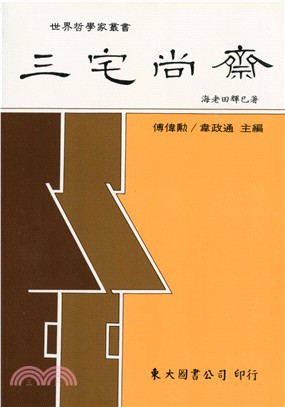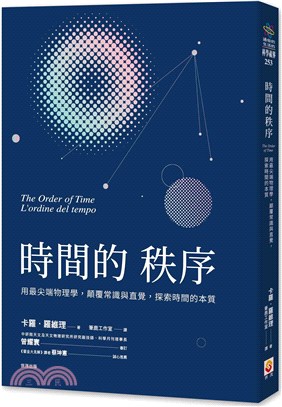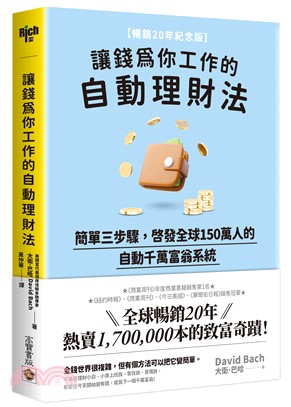定價
:NT$ 448 元無庫存,下單後進貨(到貨天數約30-45天)
可得紅利積點:13 點
相關商品
商品簡介
商品簡介
ABOUT THE ELEMENTS OF STYLE:UPDATED FOR PRESENT-DAY USE“The ancients wrote at a time when the great art of writing badly had not yet been invented. In those days to write at all meant to write well.” – Georg Christoph Lichtenberg.I was originally born in Ohio....Well, that's interesting, I thought, as I absentmindedly listened to the sports announcer on the radio.Wait! STOP! "I was ORIGINALLY BORN IN OHIO..."?Well, gosh. Where were you born after THAT?Then there are the baseball commentators who routinely say things like: "If he makes that play, the run may not have scored."Well, again, wait just a minute. "If he MAKES that play...." But the play is already over. Why is the sentence in the present tense? "...The run may not have scored." But it DID score, so in this case, the proper word is "might," "MIGHT not have scored." A baseball announcer with any feeling for elementary good grammar would have said: "If he had made that play, the run might not have scored."Oh, and then there are little niceties like this: "If I'm the Dallas Cowboys, I gotta believe...." But you AREN'T the Dallas Cowboys, and besides, how could one person be an entire football organization?Okay, okay, sports broadcasters are easy to pick on (though one wonders why sports announcers, who are paid to speak, can't speak clearly, grammatically, and well).The problem is -- and it's the problem squarely confronted in this book -- that such loose, breezy, and ungrammatical language is epidemic in print, too. Newspapers and magazines are full of cliches and buzzwords, and there's not one writer in ten who understands that difference between "lay" and "lie." If you have a friend who goes duck hunting, and s/he gives you a bunch of down, you might want to LAY the down on your mattress. Similarly, you LAY turf in the yard, or LAY bricks in the patio. But when you take to your bed for a nap, you LIE down. (The issue is clarified in this book.)Language, whether spoken or written, is like a game, and like all games, it has rules. Now, "rules" does not have to be a scary word, and we all know that in language, the rules are constantly changing. "Ain't" was once a fairly common, and unremarkable, word, but nowadays, the President cannot use "ain't" in a State of the Union address; that's just the way the game is currently played. Furthermore, we judge language, whether spoken or written, by how well it accomplishes its ends within the agreed-upon rules. (On the subject of games without rules, Robert Frost said, apropos free verse: "I would as soon play tennis with the net down.")There are many rules, formal and informal, and many little distinctions, to be learned, in language, and the author considers it fun, rather than a chore, to learn them. What is the difference between "loath" and "loathe"? When do we use "who," and when do we use "whom"? What is a gerund, what is apposition?These, and many other niceties of language, are investigated and explained in this updating of William Strunk, Jr.'s classic work. The book is based on Strunk's original text of 1918, which he wrote for the use of his students at Cornell University; it proved to be a landmark. The book was revised and expanded by E.B. White, of New Yorker fame, in 1959, but it has had no significant update since 1979. And since that time, many little affronts (for some of us, insults) to the eye and ear have gotten into the language.So here is a new edition of Strunk's classic work, with many of his rules and pronouncements expanded and explained; with new sections on proper usage and correct spelling; and even a "Rogue's Gallery" comprised of samples of egregious writing culled from current newspapers and magazines.For anyone who will reflect on it, language is an ongoing, fascinating adventure. The author intends this book to make that adventure more rewarding, and more enjoyable.Oh. The difference between "dryer" and "drier"? That, like so much else, is in the book.
主題書展
更多
主題書展
更多書展本週66折
您曾經瀏覽過的商品
購物須知
外文書商品之書封,為出版社提供之樣本。實際出貨商品,以出版社所提供之現有版本為主。部份書籍,因出版社供應狀況特殊,匯率將依實際狀況做調整。
無庫存之商品,在您完成訂單程序之後,將以空運的方式為你下單調貨。為了縮短等待的時間,建議您將外文書與其他商品分開下單,以獲得最快的取貨速度,平均調貨時間為1~2個月。
為了保護您的權益,「三民網路書店」提供會員七日商品鑑賞期(收到商品為起始日)。
若要辦理退貨,請在商品鑑賞期內寄回,且商品必須是全新狀態與完整包裝(商品、附件、發票、隨貨贈品等)否則恕不接受退貨。
























